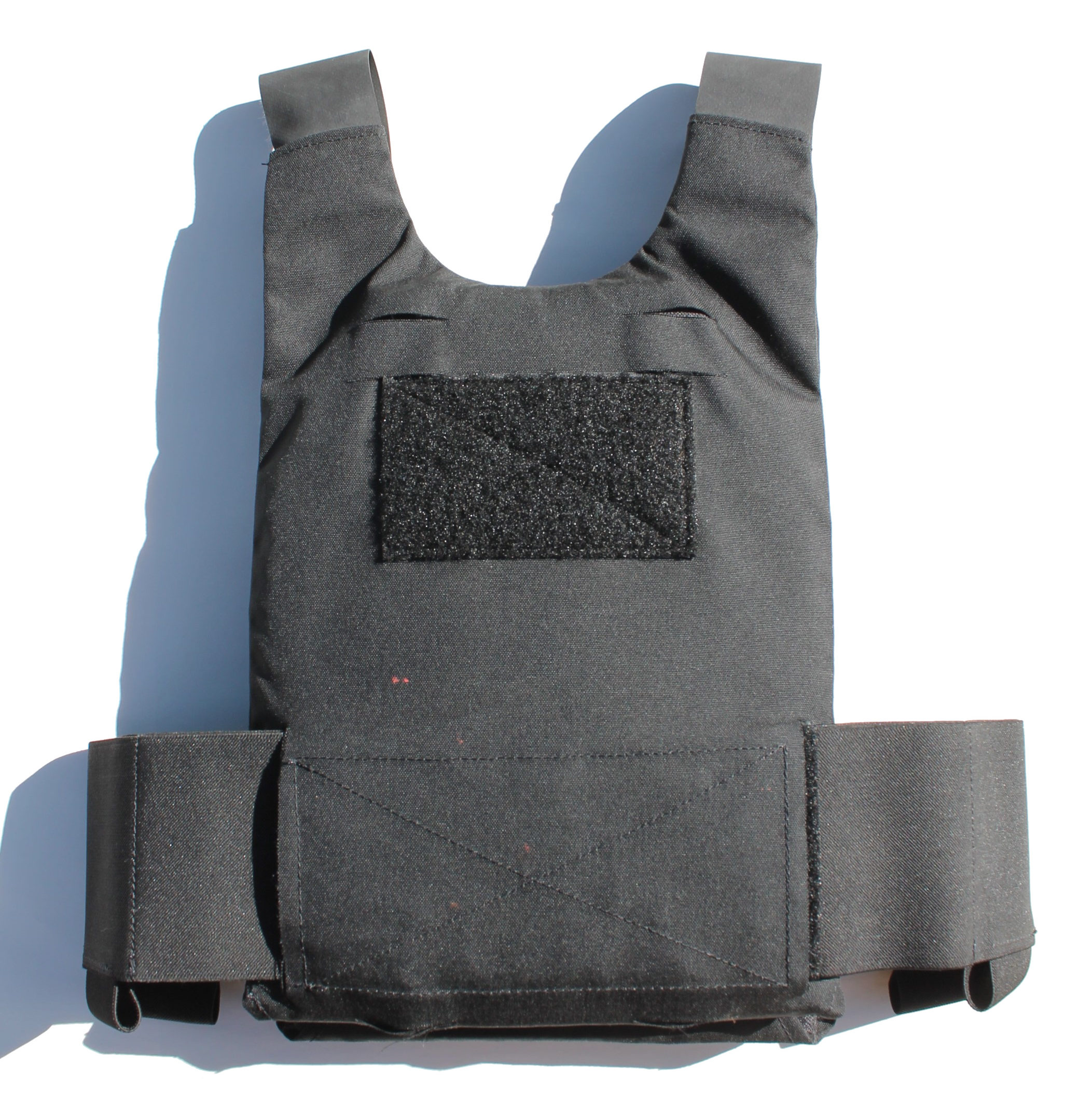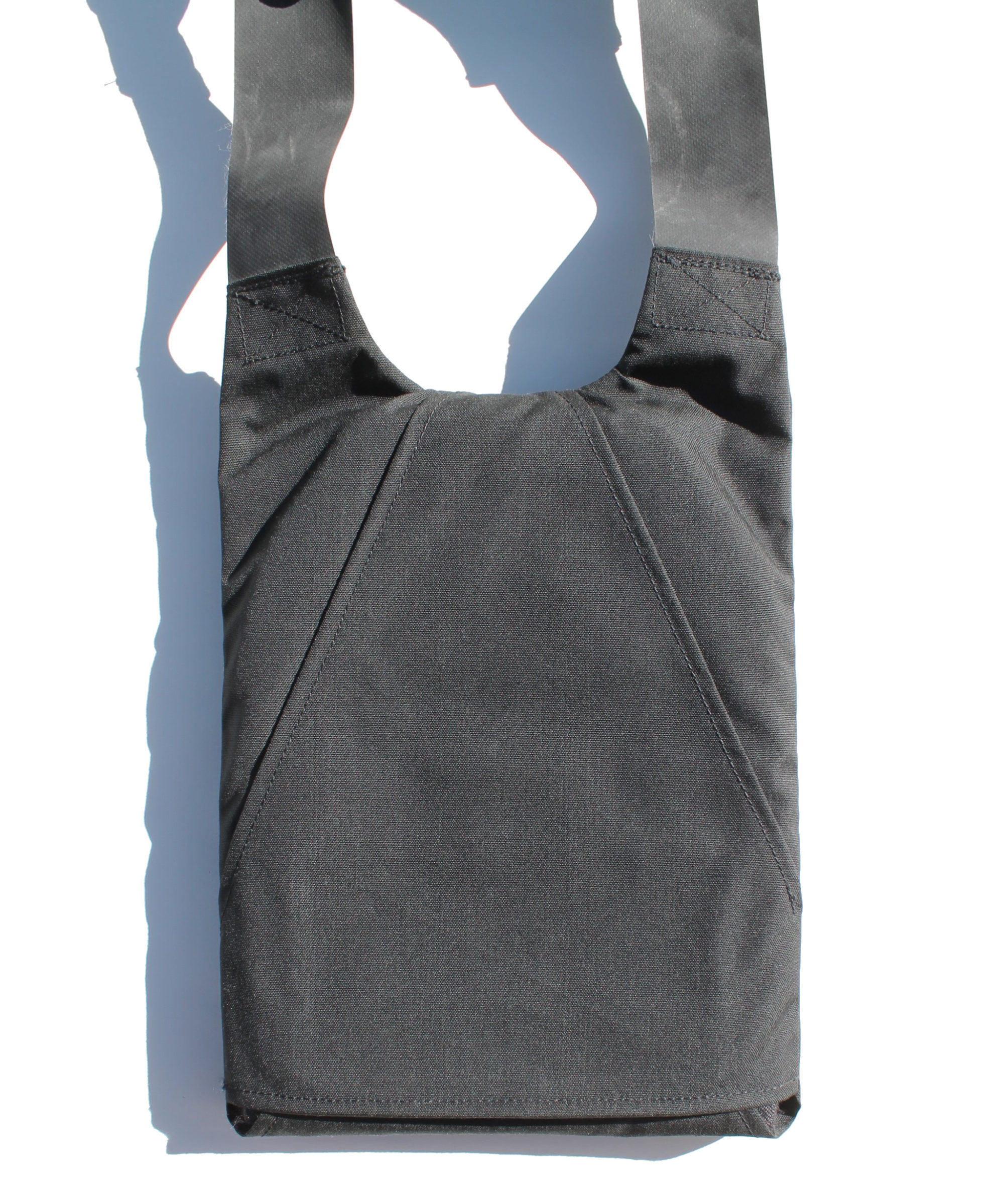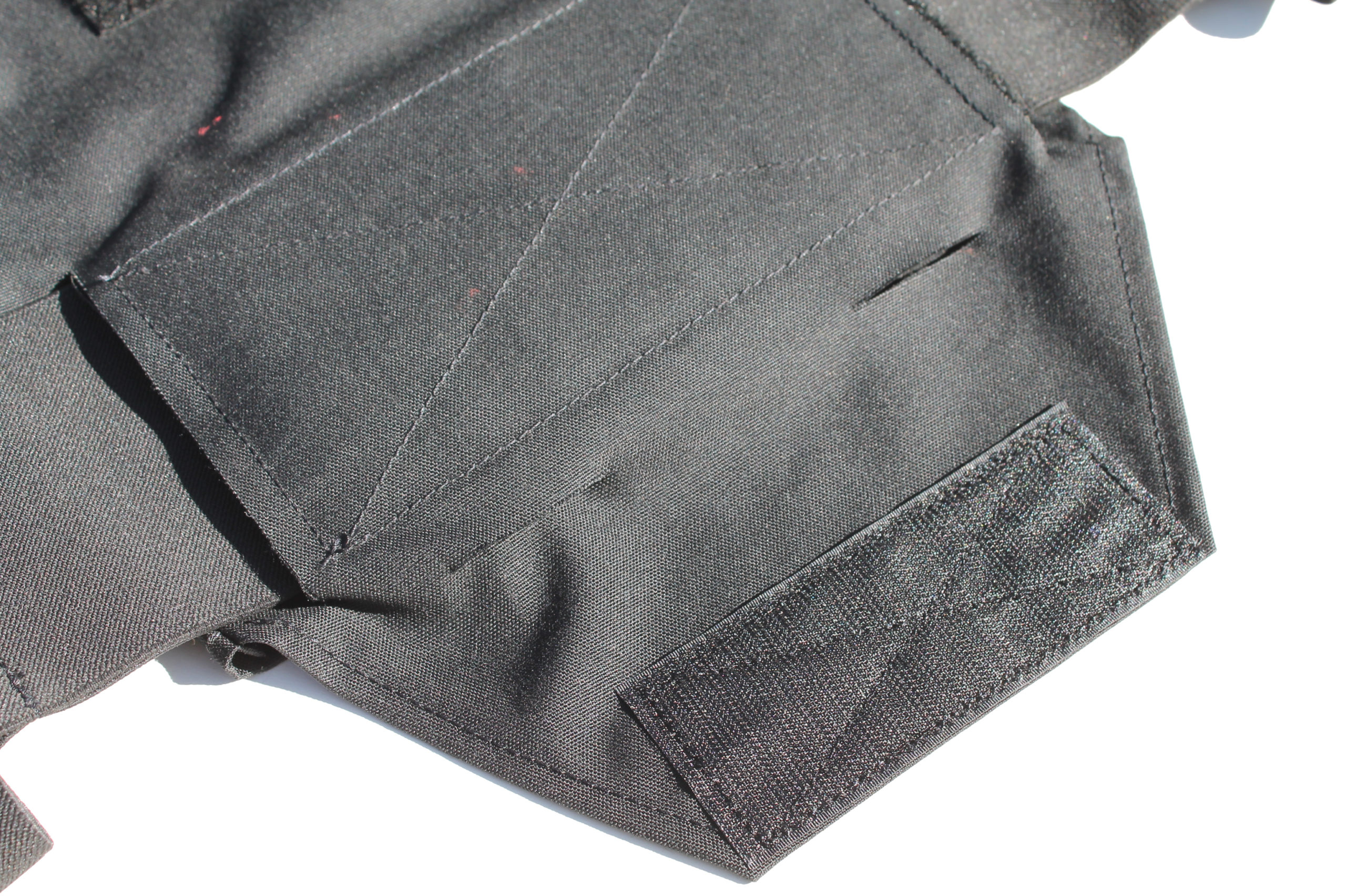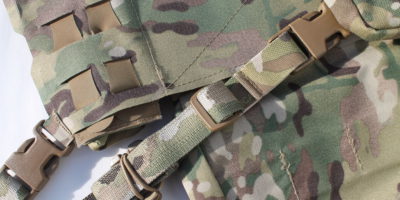A good friend of mine, who was an employee of Spiritus Systems for a number of years, recently sent over 3 separate prototypes of an early Spiritus plate carrier design. Before the finalisation of the LV-119 PC with the Covert and Overt options, there was the idea of a family of PCs consisting of the No Vis, Low Vis and Mixed Tactics. This first of three posts will cover one of the very first iterations of the Mixed Tactics plate carrier concept.
Keep in mind this is a very early prototype and extremely different in regards to materials and assembly when compared to anything that Spiritus currently sells. In this particular case, we’re looking at what some would refer to as a pattern prototype and it is made almost entirely from a single layer of very light cordura; maybe 500D at most but it might even be 330D. The final product however was intended to use laser cutting, which of course requires a laminate fabric, so this specific prototype piece would not hold up to much actual usage, and indeed was never intended to.
Starting from the front, there is of course a loop field for ID/patches on the chest and another larger field on the lower abdomen, used for secure mounting of any industry standard placard.
The fundamental shape of what would become the LV-119 is present here with the cordura extending up beyond the upper edges of the carried armour plate, forming the now-characteristic U shape around the neck of the wearer. While most PC plate bags are confined to the geometry of just the armour plates that they are designed to carry (with the shoulder straps extending down to meet the corners of the bag), the Spiritus design moves the shoulder strap connections significantly higher up.

Unlike the Covert rear plate bag that is now commercially available, which has loop right across the width of the rear bag, there is only a small rectangular loop field here. Otherwise there’s an almost entirely slick rear surface to this rig.
Details of the shoulder straps and cummerbund attachment are discussed below.


1″ webbing loops with included split-bar female buckles are present up front, which combined with the large loop field on the belly area of course allow for mounting of Spiritus’ flagship product, the Micro Fight Chassis. In this instance the webbing is sewn to an internal 3rd layer of cordura, which is sandwiched in between the two main outer layers of fabric that make up the body of the plate bag. Hence no stitching is visible for the webbing even when viewing the inner face of the front plate bag.
On this iteration of the Spiritus front plate bag there is also no PALS, no mounting points for PTTs or pass throughs for cables.

Moving up to the shoulder straps, rather than being split between the front and rear plate bags as on the 119, the single piece strap is sewn in to the front plate bag. It attaches via velcro in to the top of the rear bag and you can just about see the hook portion of that attachment on the left side of the above image. There is no pass-through/routing channel on the front bag for cables, as would be added later.
The strap itself is a single thin layer of a Trelleborg type fabric, maybe HANK though given the age of this PC it could well be Hypalon (very similar looking materials). Again, being a pattern prototype this PC was not intended to really be used.

On the inside face of the front plate bag the LV-119’s well known stowage pocket is technically present, but here it is made from the same single layer of cordura as the rest of this PC, rather than the Tweave fabric seen on the 119. The basic shape and dual-side access is present as per the final commercial product however.

On this early design the cummerbund is attached with velcro as opposed to the current commercial production grid and bungee cord system. Because each side of the cummerbund is comprised of 2 layers of heavy duty elastic with hook and loop stitched on to each side, you do end up with quite a lot of layers of material in this area. This slight issue was alleviated significantly with that aforementioned grid hole layout, which is found inside the lower rear bag on current production LV-119s.
You also run in to an issue with this particular setup in that if the cummerbund sizing needs to be enlarged such that the velcro covered areas protrude from the sides of the plate bag at all, then you end up with hook material facing inwards directly against the body. Even a field shirt will be abraded after some time by this fairly heavy gauge velcro hook, so a combat shirt torso could be worn right through in a relatively short time span.

These 2 slits in the flap at the base of the rear plate bag, along with a matching set higher up on the back, are potentially intended to allow routing of components on the Spiritus Recovery Handle. A product that the company has sold commercially for many years and is popular with various military and police professionals, but is almost never discussed in civilian circles.
My guess is that the simunition paint stains on this rig were transferred when stored with other carriers, rather than the rig being actually worn while using force-on-force training type weapons.
Some of the key foundations of the geometry of the LV-119 are certainly visible here, but as mentioned the construction on this specific carrier would not hold up to any real usage. Features wise there are some notable absences compared to the current commercial offering, but as we will see those features evolve as the design goes through it’s various iterations.
To see those evolutions take place, stay tuned for Part 2 in this series where we’ll look at the progression of the Spiritus MT PC in to what would eventually become the extremely successful LV-119.




2 Pingbacks